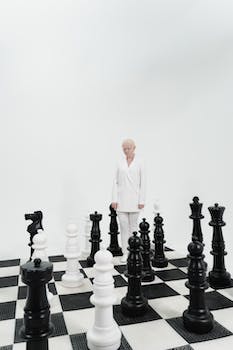

-
Table of Contents
Master the art of embroidery with this comprehensive beginner's guide.
Introduction
Introduction:
"Improving Embroidery: A Beginner's Guide" is a comprehensive resource designed to help individuals enhance their embroidery skills. Whether you are new to embroidery or have some experience, this guide offers valuable tips, techniques, and step-by-step instructions to take your embroidery projects to the next level. From selecting the right materials and tools to mastering various stitches and creating intricate designs, this guide equips beginners with the knowledge and confidence needed to improve their embroidery skills and create beautiful, personalized pieces.
Choosing the Right Fabric for Embroidery Projects
Embroidery is a beautiful and intricate art form that has been practiced for centuries. Whether you are a beginner or an experienced embroiderer, choosing the right fabric for your embroidery projects is crucial. The fabric you select can greatly impact the final outcome of your work, so it is important to make an informed decision.
When it comes to embroidery, there are a wide variety of fabrics to choose from. Each fabric has its own unique characteristics and qualities that can enhance or detract from your embroidery. One of the first things to consider when selecting fabric is the type of embroidery you will be doing. Different techniques require different fabrics, so it is important to choose one that is suitable for your specific project.
One of the most popular fabrics for embroidery is cotton. Cotton is a versatile fabric that is easy to work with and holds up well to embroidery stitches. It is also readily available and comes in a wide range of colors and patterns. Cotton is a great choice for beginners because it is forgiving and allows for easy needle penetration. It is also durable and can withstand repeated washing, making it ideal for items that will be used frequently, such as clothing or linens.
Another fabric commonly used for embroidery is linen. Linen has a natural, rustic look that adds a unique texture to embroidery projects. It is a strong and durable fabric that can withstand heavy stitching and tension. Linen is often used for more intricate and detailed embroidery work, as it provides a stable base for delicate stitches. However, linen can be more challenging to work with than cotton, as it tends to wrinkle easily and requires careful handling.
Silk is another popular choice for embroidery. Silk has a luxurious and elegant appearance that adds a touch of sophistication to any project. It is a delicate fabric that requires a gentle touch, but it is well worth the effort. Silk reflects light beautifully, giving embroidery a luminous quality. It is often used for fine embroidery work, such as silk ribbon embroidery or goldwork. However, silk can be expensive and may not be suitable for all budgets.
In addition to these fabrics, there are also specialty fabrics that are specifically designed for embroidery. Aida cloth, for example, is a popular choice for cross-stitch embroidery. It has a grid-like structure that makes it easy to count stitches and create precise designs. Aida cloth comes in different counts, which refers to the number of stitches per inch. The higher the count, the smaller the stitches will be.
When choosing fabric for embroidery, it is important to consider not only the type of fabric but also its color and texture. The color of the fabric should complement the colors of your embroidery thread and design. The texture of the fabric should also be taken into account, as it can add depth and interest to your embroidery. Experimenting with different fabrics and textures can help you discover new possibilities and create unique and beautiful embroidery projects.
In conclusion, choosing the right fabric for your embroidery projects is essential for achieving the desired results. Consider the type of embroidery you will be doing, the characteristics of different fabrics, and the overall look and feel you want to achieve. By making informed choices and experimenting with different fabrics, you can take your embroidery skills to the next level and create stunning works of art.
Essential Tools and Supplies for Embroidery Beginners

Embroidery is a beautiful and intricate art form that has been practiced for centuries. Whether you are a beginner or have some experience, having the right tools and supplies is essential to creating stunning embroidery pieces. In this article, we will discuss the essential tools and supplies that every embroidery beginner should have.
First and foremost, you will need embroidery needles. These needles are specially designed with a sharp point and a large eye to accommodate embroidery floss. It is recommended to have a variety of needle sizes to accommodate different types of fabric and thread thicknesses. Having a selection of needles will ensure that you can achieve the desired effect in your embroidery work.
Next, you will need embroidery hoops. Hoops are used to hold the fabric taut while you work on your embroidery. They come in various sizes, and it is advisable to have a few different sizes on hand to accommodate different project sizes. Hoops can be made of wood or plastic, and it is a matter of personal preference which material you choose.
Embroidery floss is another essential supply for beginners. Floss is made up of six strands that can be separated and used individually or combined for a thicker thread. It comes in a wide range of colors, allowing you to create vibrant and detailed designs. It is recommended to have a variety of colors on hand to give you more options when working on your projects.
To transfer your design onto the fabric, you will need transfer tools. There are several options available, including transfer pens, pencils, and iron-on transfers. Transfer pens and pencils allow you to draw directly onto the fabric, while iron-on transfers are pre-printed designs that can be transferred using heat. Choose the method that works best for you and your project.
Embroidery scissors are a must-have tool for any embroidery enthusiast. These small, sharp scissors are used for cutting thread and trimming excess fabric. It is important to have a dedicated pair of scissors for embroidery to ensure they stay sharp and do not become dull from other uses.
A thimble is another useful tool to have. It is worn on the finger to protect it from the sharp needle while pushing it through the fabric. Thimbles come in various materials, such as metal, plastic, or leather. Choose one that fits comfortably and provides adequate protection.
Lastly, you will need a fabric marker or pencil to mark your fabric before stitching. This will help you keep track of your design and ensure that your stitches are even and accurate. Fabric markers and pencils are available in different colors and can be easily washed out or erased after completing your embroidery.
In conclusion, having the right tools and supplies is crucial for embroidery beginners. Embroidery needles, hoops, floss, transfer tools, scissors, thimbles, and fabric markers are all essential items that will help you create beautiful and intricate embroidery pieces. By investing in these tools, you will be well-equipped to embark on your embroidery journey and create stunning works of art.
Tips and Techniques for Improving Embroidery Stitching
Embroidery is a beautiful and intricate art form that has been practiced for centuries. Whether you are a beginner or have some experience, there are always ways to improve your embroidery stitching. In this article, we will explore some tips and techniques that can help you take your embroidery to the next level.
One of the first things to consider when improving your embroidery stitching is the choice of fabric. It is important to select a fabric that is suitable for embroidery, such as cotton or linen. These fabrics have a tight weave that allows for smooth and even stitching. Avoid using fabrics that are too stretchy or have a loose weave, as they can make it difficult to achieve precise stitches.
Another important aspect of embroidery is the choice of thread. Using high-quality embroidery thread can make a significant difference in the final result. Look for threads that are smooth, strong, and colorfast. It is also a good idea to match the thread color to the fabric color for a more cohesive look. Experiment with different thread weights to achieve different effects in your stitching.
When it comes to actually stitching, one of the most important tips is to practice good tension control. Tension refers to the tightness of the stitches, and it is crucial to maintain consistent tension throughout your embroidery. Too loose stitches can result in a sloppy appearance, while too tight stitches can distort the fabric. Practice stitching on a scrap piece of fabric to find the right tension for your embroidery.
Another technique that can greatly improve your embroidery stitching is using the right needle. There are different types and sizes of embroidery needles available, and choosing the right one can make a big difference in your stitching. Generally, a sharp needle with a small eye is ideal for most embroidery projects. However, if you are working with thicker threads or fabrics, you may need a larger needle to accommodate them.
In addition to the choice of needle, it is important to use the correct stitching technique for the desired effect. There are various embroidery stitches to choose from, such as the backstitch, satin stitch, and French knot. Each stitch has its own unique look and purpose. Take the time to learn and practice different stitches to add variety and depth to your embroidery.
Lastly, paying attention to the finishing touches can greatly enhance the overall appearance of your embroidery. This includes properly securing the thread ends, trimming excess fabric, and ironing the finished piece. These small details can make a big difference in the final presentation of your embroidery.
In conclusion, improving your embroidery stitching requires attention to detail and practice. By selecting the right fabric and thread, practicing good tension control, using the right needle, and mastering different stitching techniques, you can take your embroidery to the next level. Remember to pay attention to the finishing touches for a polished and professional look. With time and dedication, you will see your embroidery skills improve and your creations become even more beautiful.
Q&A
1. What are some tips for improving embroidery as a beginner?
- Practice regularly to improve your stitching technique.
- Choose the right fabric and embroidery thread for your project.
- Use an embroidery hoop to keep the fabric taut and prevent puckering.
2. How can I make my embroidery designs more intricate?
- Start with simple designs and gradually increase the complexity as you gain experience.
- Use different embroidery stitches to add texture and detail to your designs.
- Experiment with different thread colors and thicknesses to create depth and dimension.
3. What are some common mistakes to avoid when embroidering?
- Avoid pulling the thread too tightly, as it can distort the fabric.
- Don't rush the process; take your time to ensure neat and accurate stitches.
- Avoid using low-quality materials, as they can affect the overall quality of your embroidery.
Conclusion
In conclusion, "Improving Embroidery: A Beginner's Guide" provides valuable insights and techniques for individuals looking to enhance their embroidery skills. The guide covers various aspects, including selecting the right materials, mastering different stitches, and exploring creative design ideas. By following the step-by-step instructions and practicing the suggested exercises, beginners can gradually improve their embroidery skills and create beautiful and intricate designs. With its comprehensive approach and user-friendly language, this guide serves as an excellent resource for anyone interested in improving their embroidery abilities.







